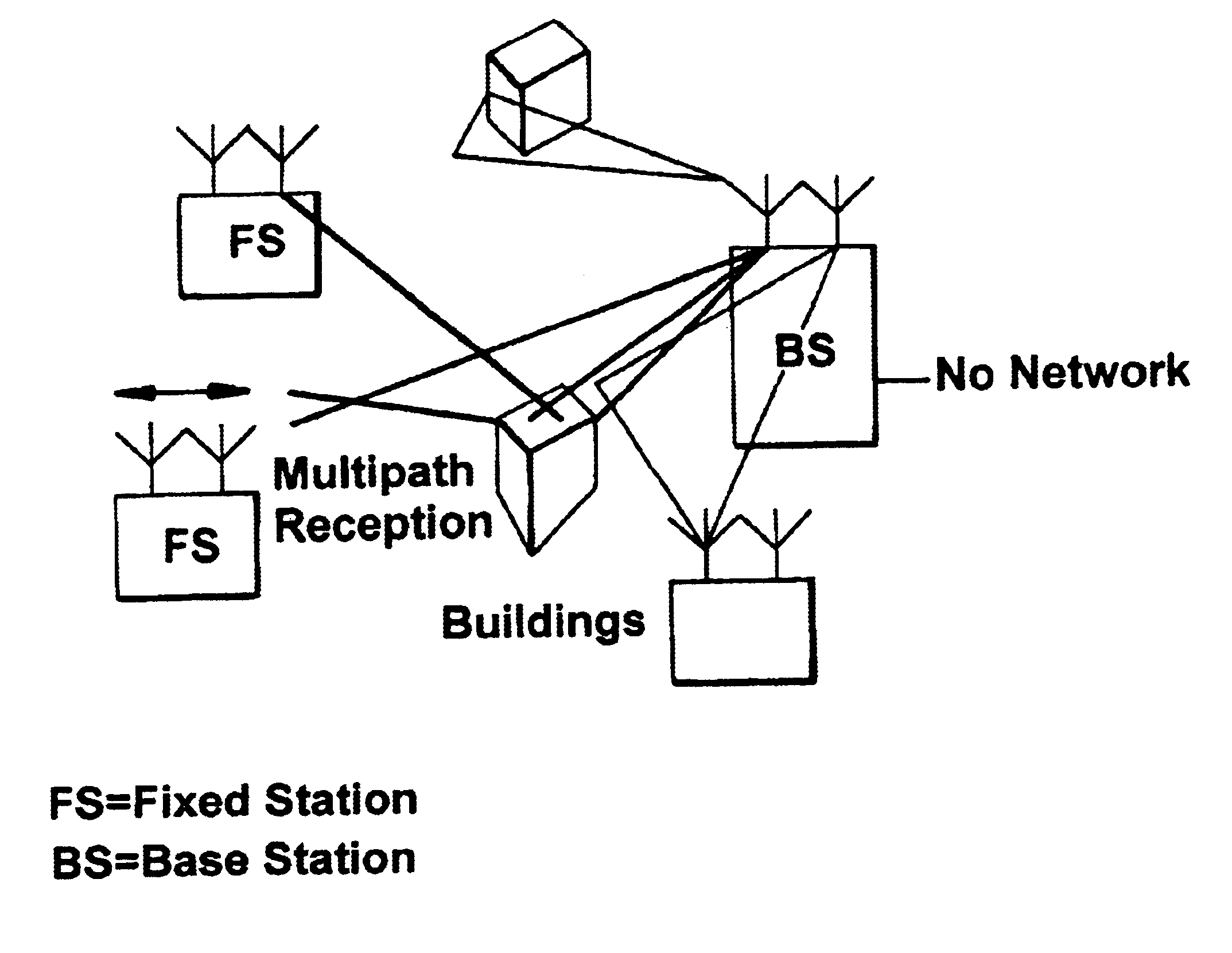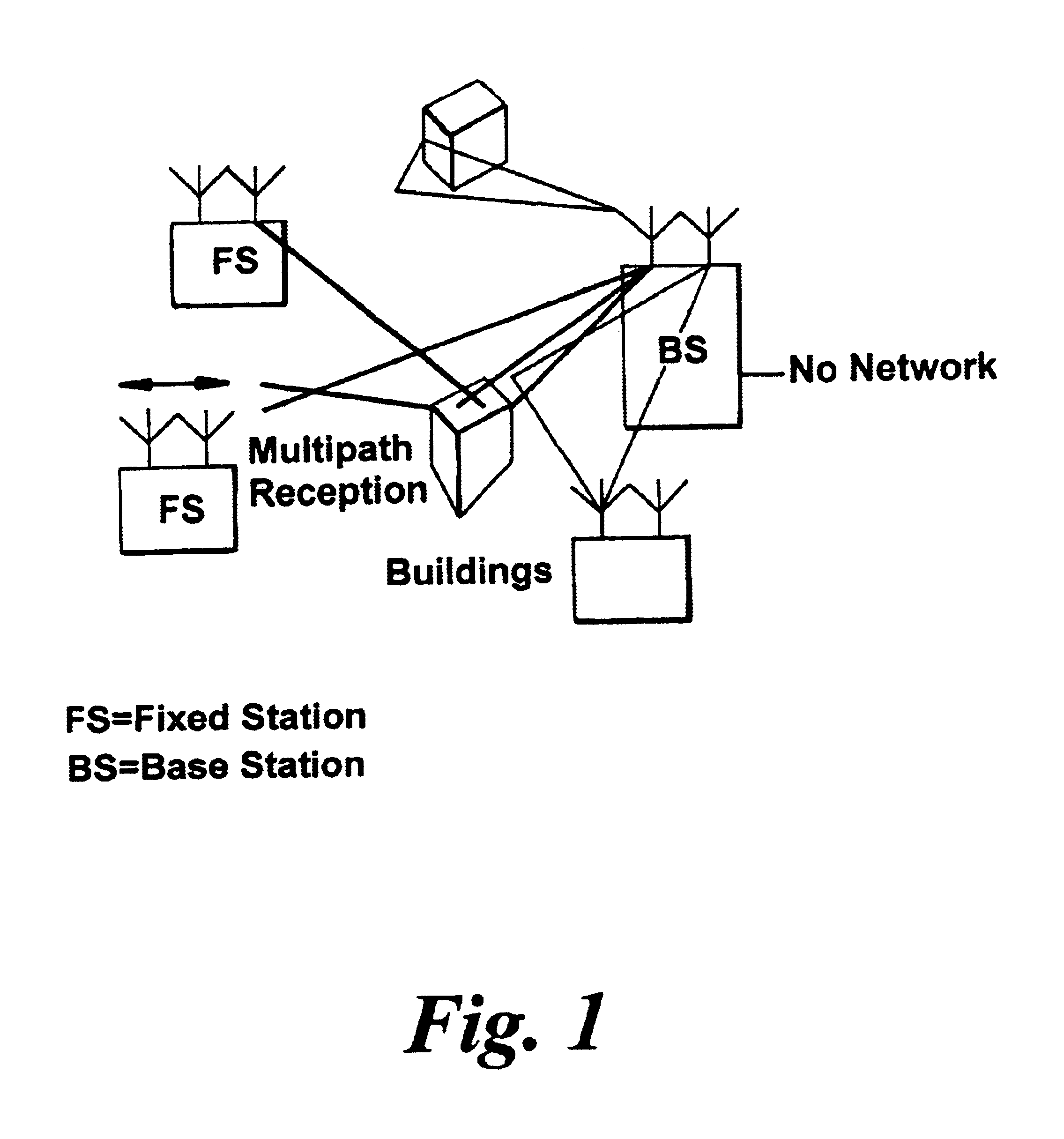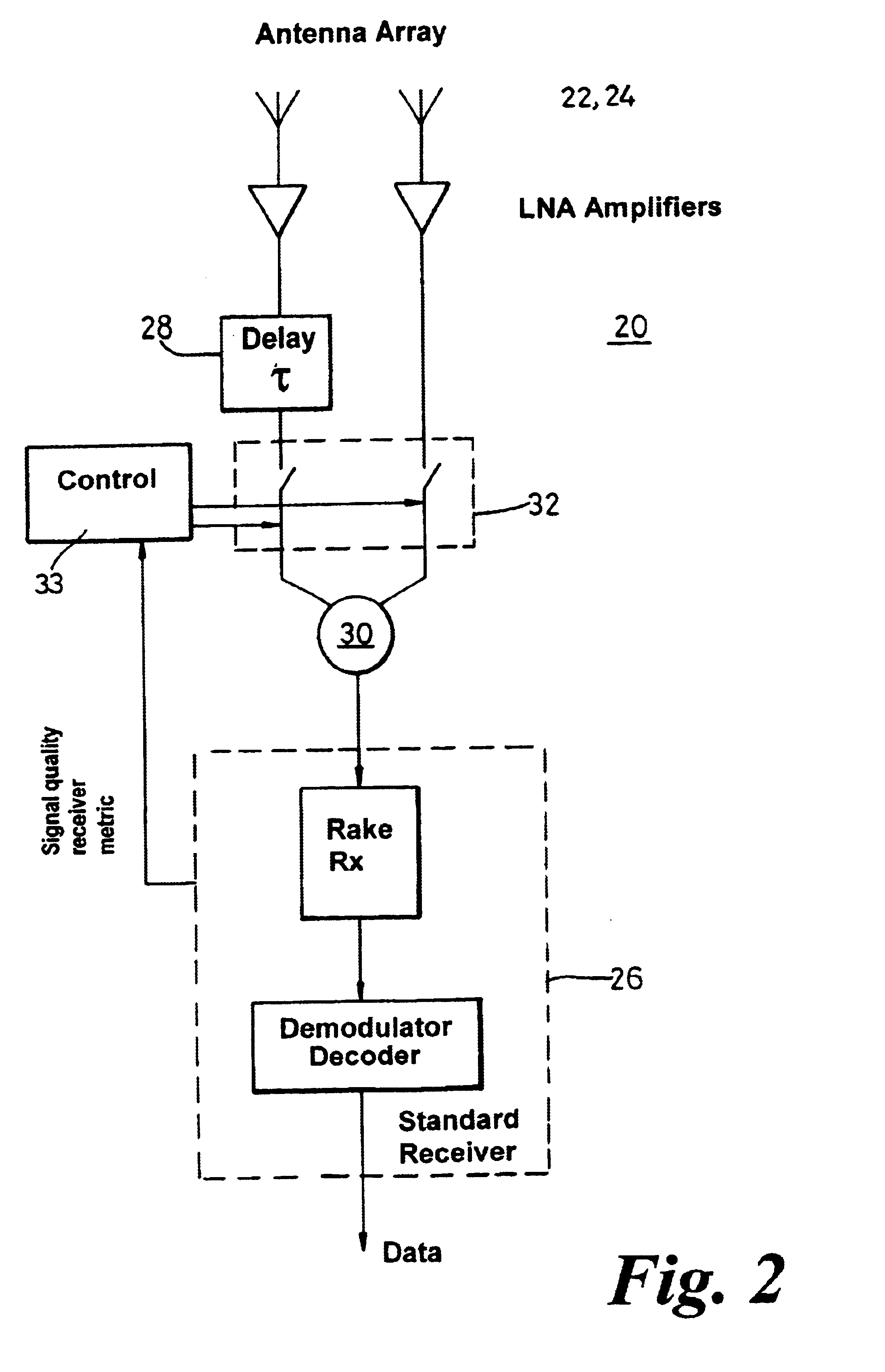Wireless terminal diversity scheme
a terminal diversity and wireless technology, applied in the field of wireless communication systems, can solve the problems of limited capacity and coverage (area covered from one base station site), limited uplink techniques applied to mobile down links, such as interleaving, and low cost. , the effect of simple implementation
- Summary
- Abstract
- Description
- Claims
- Application Information
AI Technical Summary
Benefits of technology
Problems solved by technology
Method used
Image
Examples
first embodiment
the invention is shown in FIG. 2 and provides a simple to implement downlink diversity scheme. The arrangement 20 comprises two antennas, 22, 24. Each antenna receives a different signal due to the multi-path environment. These signals are then amplified by low noise amplifiers 24 to provide a low noise front end to the receiver, 26. One signal is time delayed by optional delay means 28 by a period τ, where τ is the chip rate or the inverse of the Spread bandwidth which signals, are switched at as appropriate, to a two-way power combiner, 30, the operation of which is controlled by control means 34. A filter (not shown) is provided to filter out adjacent channel interference. The combiner scheme conveniently employs RAKE receivers and makes use of the ability of RAKE receivers to combine two time delayed multi-paths in an optimal manner. Other arrangements operable to provide a signal metric are possible instead of the RAKE receiver.
FIG. 2 does not show band pass filters, A / D conver...
PUM
 Login to View More
Login to View More Abstract
Description
Claims
Application Information
 Login to View More
Login to View More - R&D
- Intellectual Property
- Life Sciences
- Materials
- Tech Scout
- Unparalleled Data Quality
- Higher Quality Content
- 60% Fewer Hallucinations
Browse by: Latest US Patents, China's latest patents, Technical Efficacy Thesaurus, Application Domain, Technology Topic, Popular Technical Reports.
© 2025 PatSnap. All rights reserved.Legal|Privacy policy|Modern Slavery Act Transparency Statement|Sitemap|About US| Contact US: help@patsnap.com



